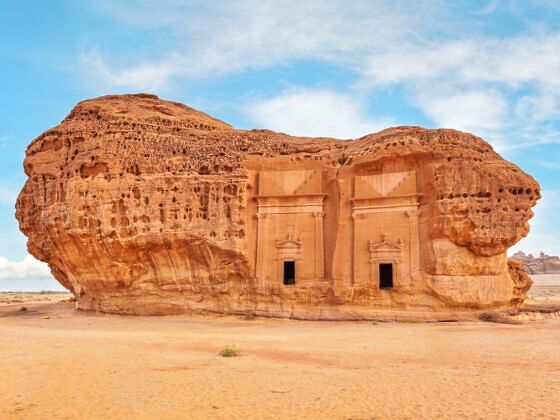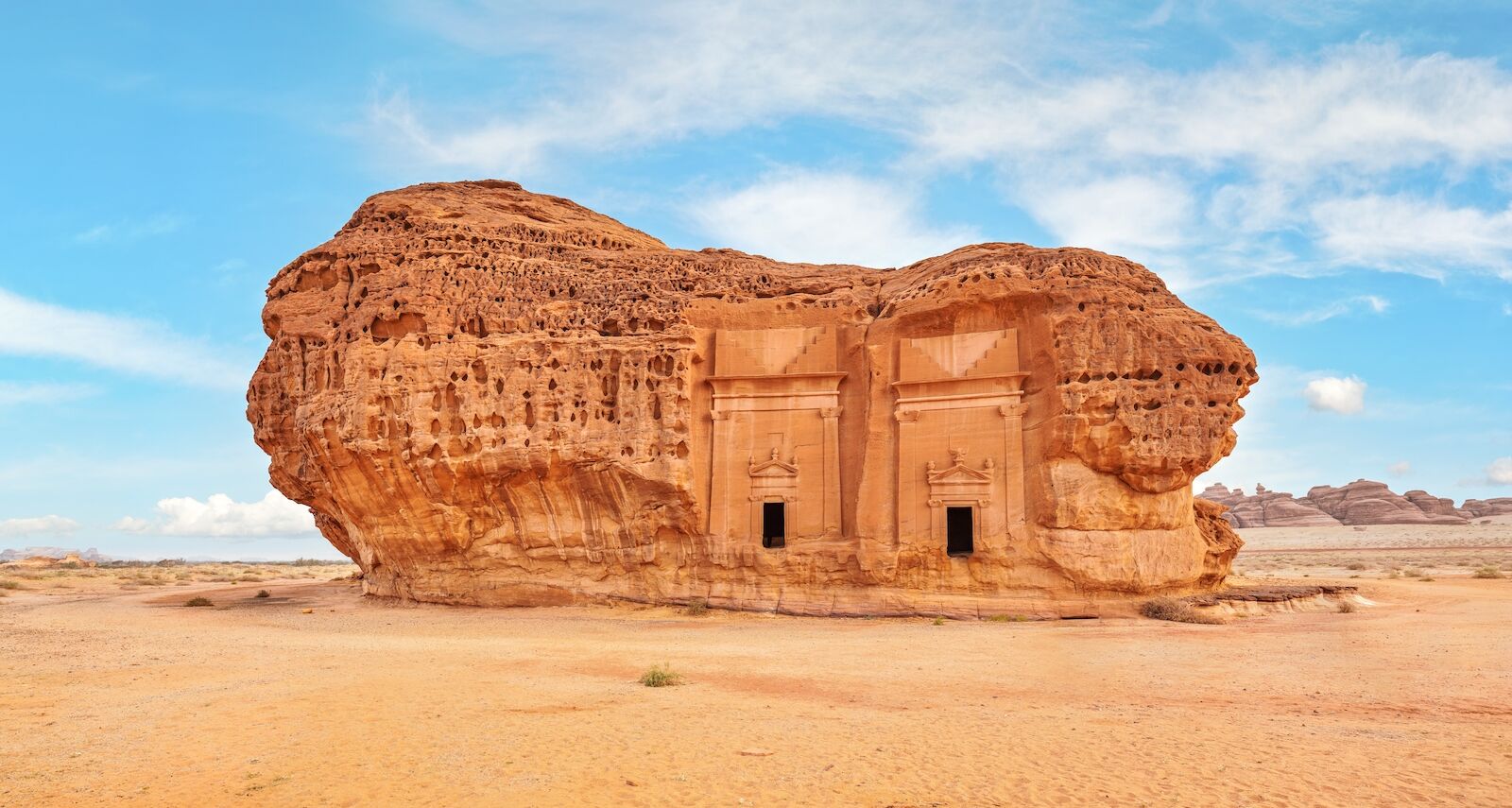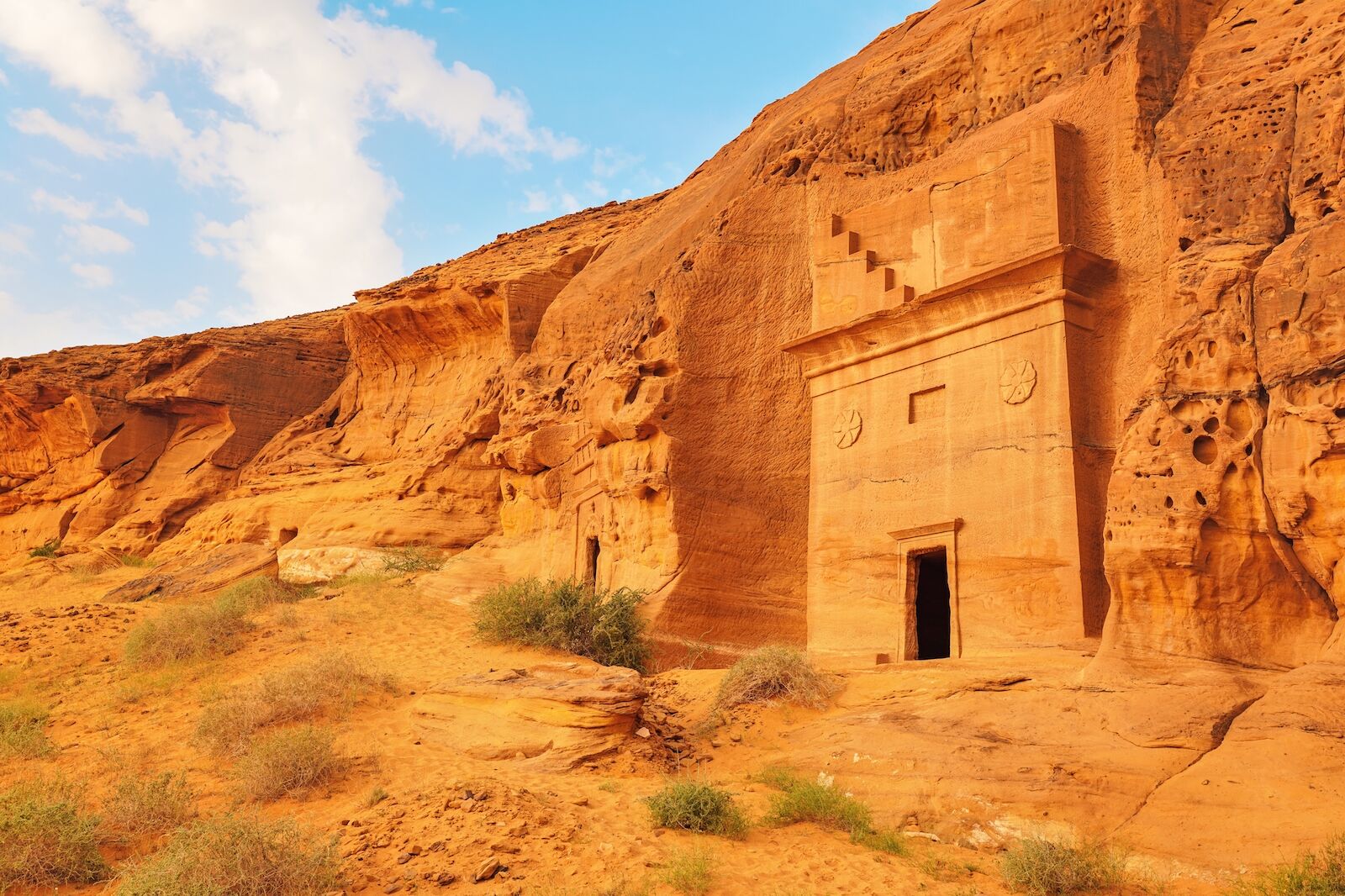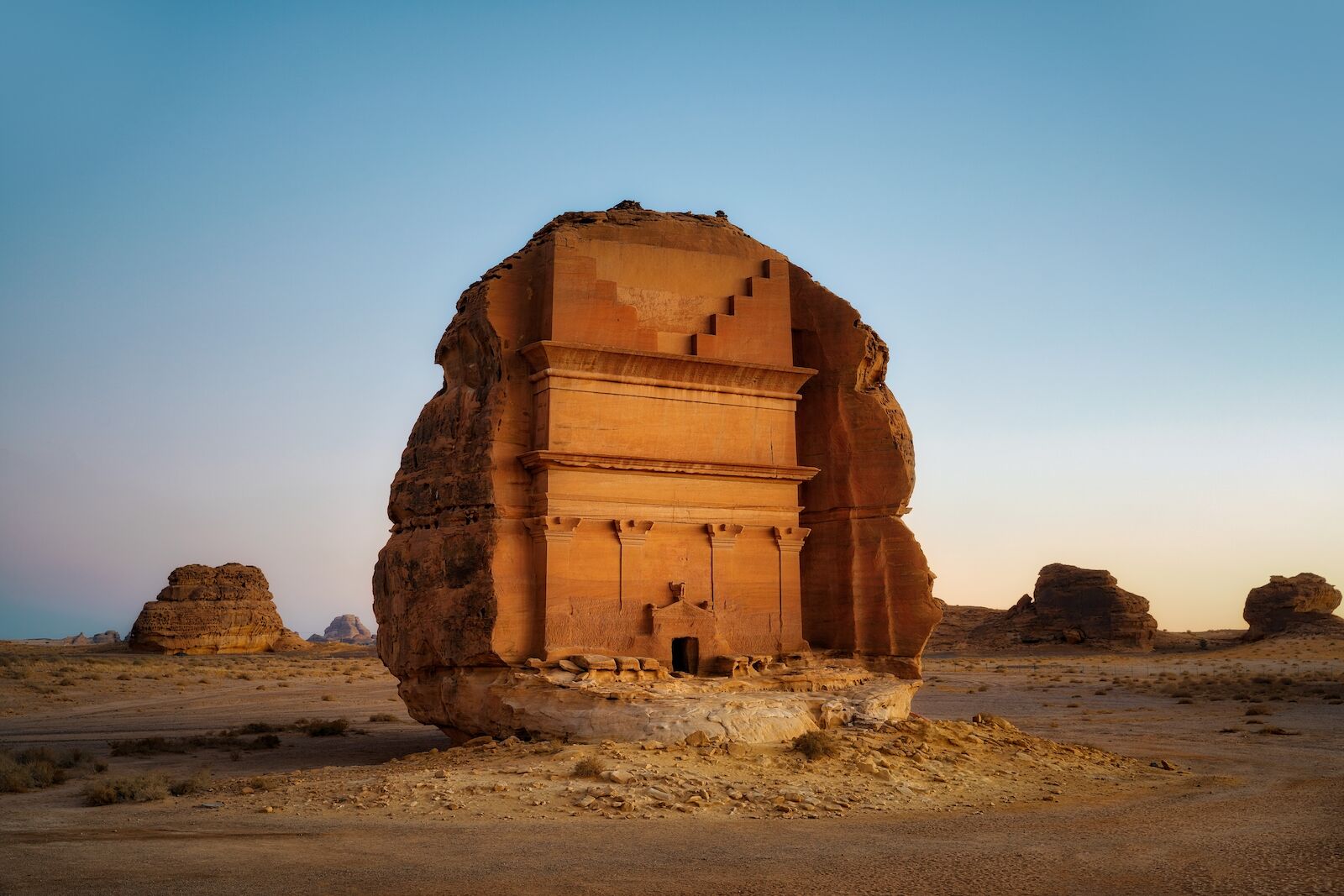When Saudi Arabia opened up its door to non-Muslim international tourists in 2019, the world discovered Mada’in Saleh. This archeological site, consisting of the 2,000-year-old remains of a Nabatean city, is also known as Hegra. Mada’in Saleh, a UNESCO heritage site, is not dissimilar to the wonders you’ll see in Petra, Jordan, but on a smaller and much less-crowded scale.

Everything You Need to Know About Hegra, Saudi Arabia's First World Heritage Site
- Where is Hegra and how to get there?
- Are Petra and Mada’in Saleh the same?
- What is the significance of Hegra or Mada’in Saleh?
- Is Hegra Saudi Arabia’s first UNESCO World Heritage Site?
- What is the history of Mada’in Saleh in Saudi Arabia?
- Can Muslims visit Mada’in Saleh?
Where is Hegra and how to get there?
The archeological site of Hegra (also known as Mada’in Saleh) is located in the Medina Province in the Hejaz region of Saudi Arabia. The site is 26 miles from the city of AlUla (a 35-minute drive), where there is an international airport with flights to and from Dubai, Riyadh, Jeddah, and Damman. Hegra is only 11.6 miles to the world-famous Maraya Concert Hall, the largest mirrored building in the world.
Are Petra and Mada’in Saleh the same?

Photo: Lubo Ivanko/Shutterstock
Petra and Mada’in Saleh (also known as Hegra) are two different archeological sites located in two different countries. Petra is located in Jordan, while Mada’in Saleh is in Saudi Arabia. However, the two sites present many similarities. Both Petra and Mada’in Saleh were built in desert environments by the previously nomadic Nabateans, a pre-Islamic Arab people who dominated the caravan trade on the Arabian Peninsula. Petra was initially the capital of the Nabatean Kingdom and its largest city, while and Mada’in Saleh was its second-largest city. Moreover, both sites feature extremely similar and uniquely Nabatean rock-hewn monuments, including highly decorated tombs, of which there are 111 in Mada’in Saleh and more than 600 in Petra. Both sites also bear proofs that the Nabateans were expert in water management with structures such as wells, water tunnels, cisterns, reservoirs, and more.
What is the significance of Hegra or Mada’in Saleh?
Mada’in Saleh, also known as Hegra, is an immense and extremely well-preserved archeological site located in northwestern Saudi Arabia. It is one of the largest preserved sites of the Nabatean civilization. Little is known of the Nabateans who were an ancient nomadic people until they settled in Jordan during the fourth century BC and built Petra. At its height, the Nabatean Kingdom covered parts of Jordan, Israel, Egypt, Syria, and Saudi Arabia.
While Mada’in Saleh used to be a city, it became a necropolis, i.e a large cemetery. Today, the beautiful rock-cut structures in Mada’in Saleh are tombs (there are 111 of them) built between the first century BC and the first century AD. The most famous tomb on the site is the stand-alone 72-foot-tall Qasr al-Farid (the Lonely Castle.) Some rock-hewn water wells also remain, proving again that the Nabatean were experts on how to harvest and conserve water in the desert.
While the archeological site is dominated by impressive Nabatean tombs, UNESCO notes that it is also home to pre-Nabatean inscriptions and cave drawings, proving that the area saw human presence prior to the Nabatean civilization.
Hegra: Saudi Arabia’s first UNESCO World Heritage site

Photo: Lubo Ivanko/Shutterstock
Hegra, also known as Mada’in Saleh, became Saudi Arabia’s first UNESCO World Heritage site in 2008.
Today, there are seven UNESCO World Heritage sites in Saudi Arabia and 14 sites on the tentative list. Saudi Arabia’s seven UNESCO listed sites are (in order of inscription):
- Hegra Archaeological Site
- At-Turaif District in ad-Dir’iyah
- Historic Jeddah
- Rock Art in the Hail Region of Saudi Arabia
- Ḥimā Cultural Area
- Al-Ahsa Oasis
- ‘Uruq Bani Ma’arid
The most recent Saudi site to be UNESCO-listed is ‘Uruq Bani Ma’arid, which was inscribed in 2023.
What is the history of Mada’in Saleh in Saudi Arabia?

Photo: Lukas Bischoff Photograph/Shutterstock
The rock-cut monuments at Mada’in Saleh (or Hegra) date back from the first century BC to the first century AD and were built by the Nabatean people whose empire eventually stretched from across parts of Syria, Egypt, Israel, Jordan, and northwestern Saudi Arabia. At that time, the country of Saudi Arabia did not exist and the Arabian Peninsula was inhabited by various peoples. Mada’in Saleh is pre-Islamic — the Prophet Muhammad’s revelations in Mecca only took place in the year 610, many centuries later. Islam then spread throughout the world, and in the eighth century, the Islamic Empire stretched from Spain to China. The first Saudi state, the Shaikh, was established in 1727. The kingdom of Saudi Arabia as established on September 23, 1932.
The Nabateans were not the first people to inhabit Saudi Arabia. There is evidence of human presence dating back 15,000 to 20,000 years.
Can Muslims visit Mada’in Saleh?
Mada’in Saleh, and the entire area around AlUla, was reputed to be cursed, and haunted by a jinn, i.e. an ill-intentioned spirit in the Arab folklore. Reuters reports that it was previously believed that even Prophet Mohammad warned against visiting this part of the country. Today, however, with Saudi Arabia is becoming a serious tourist destination with AlUla as one of the main attractions, the curse seems to have been all but forgotten and visitors, Muslim and otherwise, are encouraged to visit in this beautiful part of the country.
Remember, however, that the holy cities of Mecca and Medina, both in Saudi Arabia, are forbidden to all non-Muslim visitors.